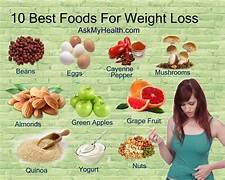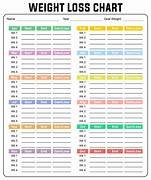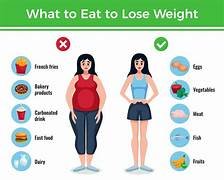cult fitness near me,straight fit jeans mens,straight fit jeans,mom fit jeans,fit me foundation—- Lets Discus…..
Perfect Diet and Meal Plan – A Complete Course
In today’s fast-paced world, maintaining a healthy diet can seem like an overwhelming task. With so much conflicting information out there, many are left wondering what the perfect diet and meal plan really look like. To help simplify things, this article will provide a comprehensive guide to achieving optimal health and nutrition. Whether you’re aiming for weight loss, muscle gain, or simply improving overall well-being, this “Perfect Diet and Meal Plan” course covers all the essentials.

A perfect diet is not one-size-fits-all. It is a balanced, personalized approach that provides all the necessary nutrients your body needs for energy, maintenance, and growth. The key lies in understanding your body’s requirements, setting realistic goals, and selecting the right foods to achieve them.
A well-rounded diet includes:
– **Macronutrients**: These include carbohydrates, proteins, and fats, which provide the body with energy and serve as building blocks for muscle and tissue.
– **Micronutrients**: These are essential vitamins and minerals that support bodily functions such as metabolism, immunity, and bone health.
– **Hydration**: Water is essential for digestion, absorption, circulation, and temperature regulation.
### Why Is the Right Diet Important?
Eating the right food not only helps you maintain a healthy weight but also improves your mental well-being, energy levels, and overall quality of life. A diet tailored to your individual needs can help prevent chronic diseases like diabetes, heart disease, and hypertension.
Now, let’s dive into the components of a perfect diet and how to craft the ideal meal plan for your lifestyle and goals.
## Step 1: Understanding Your Macronutrient Needs
Macronutrients—carbohydrates, proteins, and fats—are the core of any diet. Balancing these three components is critical to reaching your health and fitness goals.
### 1. Carbohydrates: The Body’s Primary Fuel Source
Carbohydrates are your body’s primary energy source. They break down into glucose, which fuels your muscles and brain. However, not all carbs are created equal.
– **Complex carbohydrates** (found in whole grains, vegetables, and legumes) digest slowly, providing steady energy.
– **Simple carbohydrates** (found in sugary foods and refined grains) break down quickly, causing spikes in blood sugar.
For a balanced diet, focus on consuming 45–65% of your daily calories from complex carbohydrates like brown rice, quinoa, oats, whole wheat pasta, and sweet potatoes.

### 2. Protein: Building and Repairing Muscle
Protein is essential for muscle repair, immune function, and hormone regulation. Aim for lean sources of protein, such as:
– Chicken
– Turkey
– Fish
– Eggs
– Tofu
– Legumes (like lentils and chickpeas)
A typical recommendation for protein intake is 10–35% of your daily calories. For those focused on muscle gain, aim for 1.6–2.2 grams of protein per kilogram of body weight.
### 3. Fats: Supporting Vital Functions
Dietary fats support hormone production, brain function, and the absorption of fat-soluble vitamins (A, D, E, and K). Focus on healthy fats like:
– Avocados
– Nuts and seeds
– Olive oil
– Fatty fish (like salmon)
Fats should make up 20–35% of your daily caloric intake, prioritizing unsaturated fats over trans fats and saturated fats.
## Step 2: Tailoring Your Caloric Intake
To create a meal plan, you first need to determine how many calories your body requires. This depends on several factors, including your age, gender, weight, height, and activity level.
### 1. **Calculate Your Basal Metabolic Rate (BMR)**
BMR represents the number of calories your body needs to maintain basic physiological functions (like breathing, circulation, and cell production) at rest. You can calculate your BMR using the following formula:
– For men: BMR = 88.36 + (13.4 × weight in kg) + (4.8 × height in cm) – (5.7 × age in years)
– For women: BMR = 447.6 + (9.2 × weight in kg) + (3.1 × height in cm) – (4.3 × age in years)

### 2. **Factor in Your Activity Level**
Once you know your BMR, multiply it by your activity level to get your Total Daily Energy Expenditure (TDEE). This will tell you how many calories you need per day to maintain your current weight.
– Sedentary (little to no exercise): BMR × 1.2
– Lightly active (light exercise/sports 1-3 days/week): BMR × 1.375
– Moderately active (moderate exercise/sports 3-5 days/week): BMR × 1.55
– Very active (hard exercise/sports 6-7 days a week): BMR × 1.725
– Super active (very hard exercise, physical job, or training twice a day): BMR × 1.9
### 3. **Adjust for Your Goals**
– **For weight loss**: Create a calorie deficit by eating fewer calories than your TDEE. A deficit of 500 calories per day generally results in 1 pound (0.45 kg) of weight loss per week.
– **For muscle gain**: Eat more calories than your TDEE to support muscle growth. Aim for a calorie surplus of 250–500 calories per day.
## Step 3: Building Your Perfect Meal Plan
Now that you understand your macronutrient needs and caloric intake, it’s time to build your meal plan. This plan should be balanced, diverse, and sustainable for long-term success.
### 1. **Breakfast Ideas**
Breakfast is an important meal as it kick-starts your metabolism and provides energy for the day. Here are some nutritious and balanced options:
– **Oatmeal with fruit and nuts**: A great source of fiber, complex carbs, and healthy fats.
– **Greek yogurt with berries and chia seeds**: Packed with protein, antioxidants, and omega-3 fatty acids.
– **Scrambled eggs with whole-grain toast and avocado**: A protein-rich meal that also provides healthy fats and fiber.
### 2. **Lunch Ideas**
For lunch, focus on meals that provide a balance of carbs, proteins, and healthy fats to keep you energized throughout the afternoon.
– **Quinoa salad with grilled chicken and vegetables**: A high-protein, fiber-rich dish that’s easy to prepare.
– **Brown rice bowl with lean beef, broccoli, and sesame seeds**: A satisfying meal filled with protein, vitamins, and minerals.
– **Whole-grain wrap with turkey, hummus, and mixed greens**: A quick, balanced meal option.
### 3. **Dinner Ideas**
Dinner should be lighter but still balanced to avoid overeating before bed.
– **Grilled salmon with roasted vegetables and quinoa**: A heart-healthy option rich in omega-3s, fiber, and protein.
– **Stir-fry with tofu, brown rice, and mixed vegetables**: A plant-based meal packed with nutrients.
– **Chicken breast with sweet potato and green beans**: A classic meal that provides lean protein and complex carbs.
### 4. **Healthy Snacks**
In between meals, snacks can help keep your energy levels stable and prevent overeating during meals. Choose nutrient-dense options like:
– Almonds, walnuts, or mixed nuts
– Sliced vegetables with hummus
– A piece of fruit with a handful of seeds
## Step 4: Managing Hydration and Supplements
Water plays a crucial role in all bodily functions, from digestion to muscle performance. Aim to drink at least 8 cups (2 liters) of water per day, but increase your intake if you exercise frequently or live in a hot climate.
### Supplements
While a balanced diet should provide most of the nutrients your body needs, some individuals may benefit from supplements, particularly if they have specific deficiencies or dietary restrictions. Common supplements include:
– **Multivitamins**: To cover gaps in daily micronutrient intake.
– **Protein powder**: For those who struggle to meet their protein needs through food alone.
– **Omega-3 fatty acids**: Beneficial for heart health and brain function.
– **Vitamin D**: Essential for bone health, especially in those who don’t get much sun exposure.
## Step 5: Adjusting and Fine-Tuning Your Meal Plan
Your perfect diet and meal plan should evolve over time based on your goals, preferences, and body’s response. Regularly assess your progress and adjust your plan as needed. For example, if your goal is weight loss and you hit a plateau, you may need to decrease calories or increase activity levels. Similarly, if you’re building muscle but not seeing results, you might increase your caloric intake or adjust your macronutrient ratios.

## Conclusion
Crafting the perfect diet and meal plan is a journey of balance, customization, and mindful eating. By understanding your macronutrient needs, tailoring your caloric intake, and choosing nutrient-dense foods, you can create a sustainable plan that supports your health and fitness goals. Remember, consistency is key, and flexibility allows for long-term success.
With the guidelines in this course, you’re now well-equipped to embark on your journey toward a healthier, more vibrant life.

